Description
Capacity : Option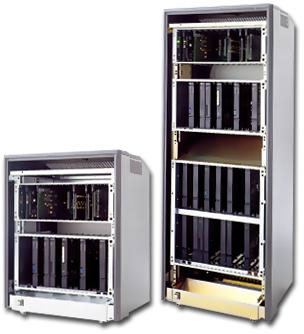
M2/M3 cabinets :
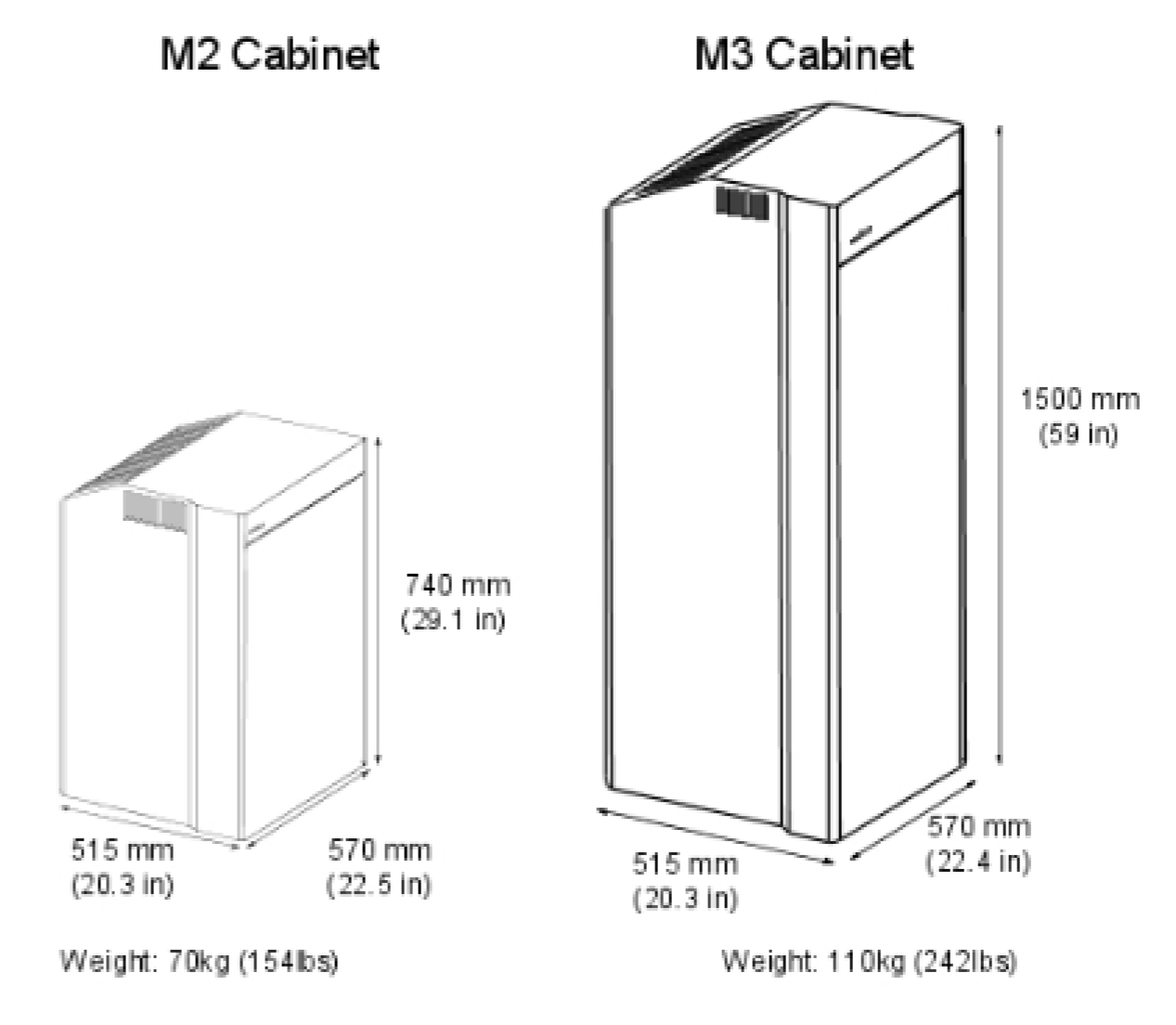
M2 cabinet :

The M2 cabinet provides 14 or 28-slot Crystal Shelves in three different configurations:
- M2 cabinet with a single 14-slot Crystal shelf
- M2 cabinet with two 14-slot Crystal shelves, one main Crystal and one peripheral Crystal (with interconnection board)
- M2 cabinet with a single 28-slot Crystal shelf
- This basic configuration of a single system can be extended to a maximum of 56 slots with a second M2 cabinet via interconnection boards.The M2 targets configurations from between 100 and 400 users.
- The M2 cabinet must be powered by a 48V external power supply.
M3 cabinet :
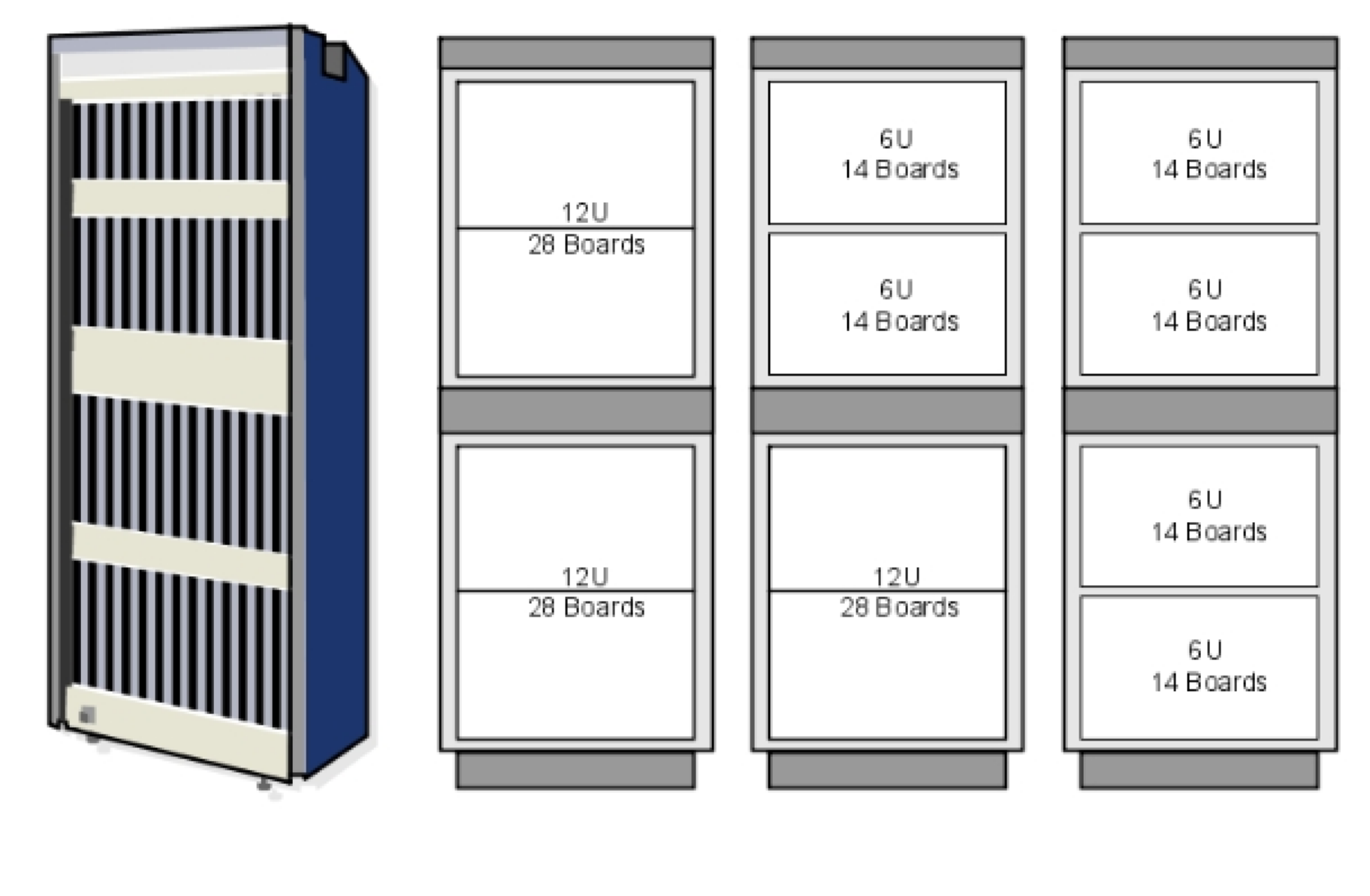
The M3 cabinet provides 14 or 28-slot Crystal Shelves in three different configurations:
- M3 cabinet with one 14-slot main Crystal shelf, and three 14-slot peripheral Crystal shelves (with interconnection boards)
M3 cabinet with one 28-slot main Crystal shelf and two 14-slot peripheral Crystal shelves
M3 cabinet with one 28-slot main Crystal shelf, and one 28-slot peripheral Crystal shelf
This basic configuration of a single system can be extended with other M3 cabinets via interconnection boards.
The M3 targets configurations from between 400 and 5000 users.
The M3 cabinet must be powered by a 48V external power supply.
Cabinet installation
The M2/M3 cabinets may be installed in two different ways:
- On a raised floor. In this configuration, each cable is fed out through the cutout provided in the cabinet floor
- On the room floor. In this configuration, each cable is fed out through the opening through the rear panel of the cabinet
Leave a minimum free space in the front and rear of the cabinet, so the doors can open properly.
For safety reasons, all Mi cabinets must be secured to the floor using an attachment kit.
Ventilation is important for correct cooling, this is particularly important when using standard racks.
Contact Alcatel-Lucent support for more details about the mandatory fan / deflector kits.
Power connections
Protective ground
The system must be grounded for all types of electrical installation including:
- TT (internal ground for each unit)
- TN (common ground for all equipment) strongly recommended
- IT with 230 V mesh voltage (Norway only)
For Australia, the equipment must be connected using a GG type power scheme only.
For safety reasons, the ground must be connected before any other connections and the entire system must always be wired to the ground.
A cabinet terminal block connects the ground cable to the cabinet.
Connection to a DC -48 V external power supply
A rectifier supplies the power required for operating the M2/M3 cabinets. A local, easily accessible isolating device must be an integral part of the installation.
A cabinet terminal block, located at the bottom of the rack, connects the –48 VDC cables. The cable diameter must be between 6 to 10 sq. mm (AWG equivalent 9 to 7 approximately). 20 A Internal fuses (time delayed) protect each shelf.
This rectifier must be backed up by a set of batteries providing a minimum of five minutes standalone power.
When battery discharging is detected, an automatic system shutdown is initiated.
Power supply cabinet
For 48V DC rectifiers, Alcatel-Lucent recommends using the Power Supply Cabinet (PSC). The PSC enables M2/M3 cabinets to be powered from a 230V (or 110V) power source. Cabinet powering can be selected to meet different requirements. In its maximum configuration, the cabinet delivers 4800W power with a 230V power supply (2400W with 110V power supply).
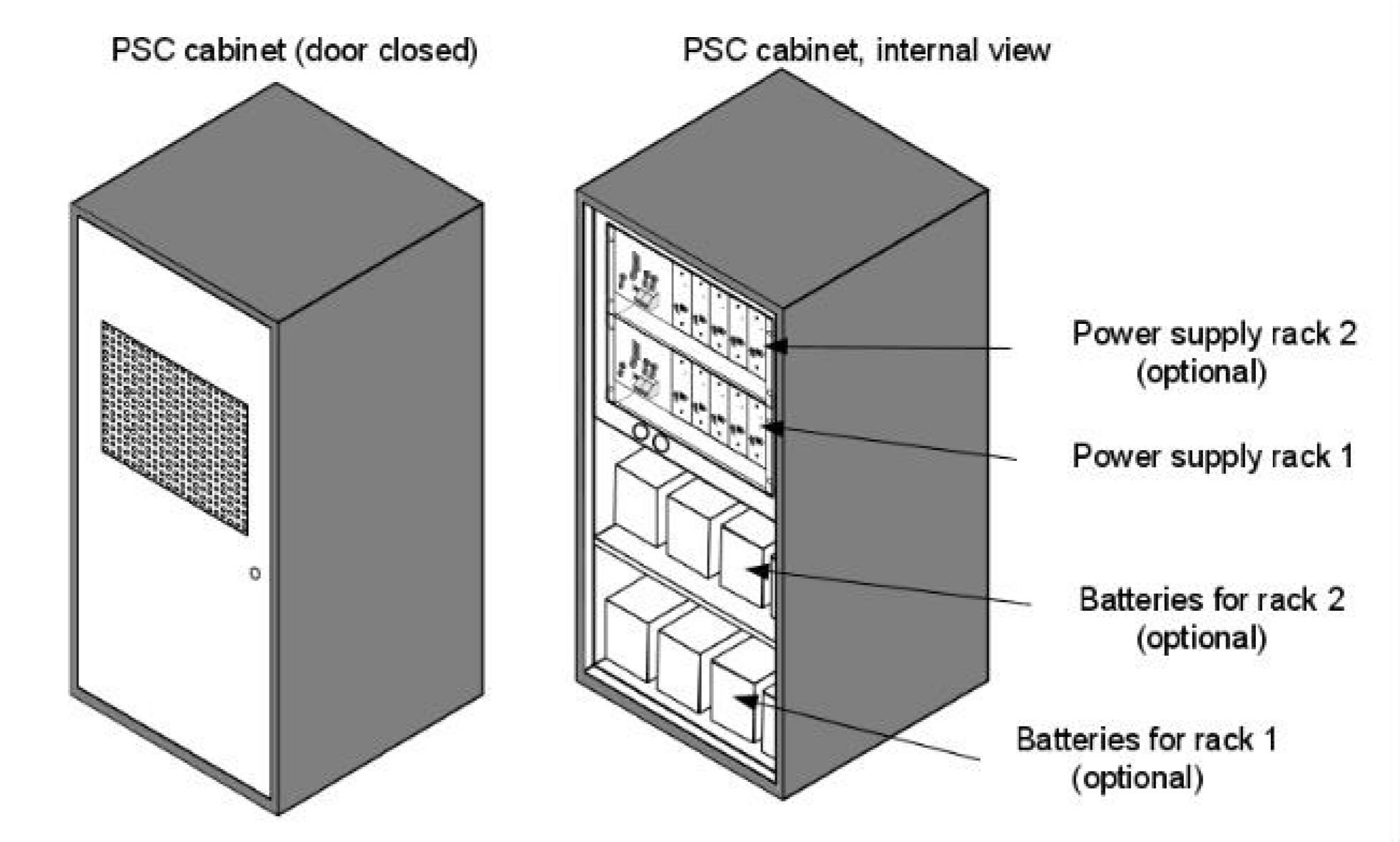
Crystal 14-slots shelf in data equipment
This solution allows the implementation of an OmniPCX Enterprise configuration where common hardware solutions does not fully fit a customer’s needs (homogeneous hardware, modularity, very high traffic, 4635J voice mail, tie line and RT2 remote gateway).
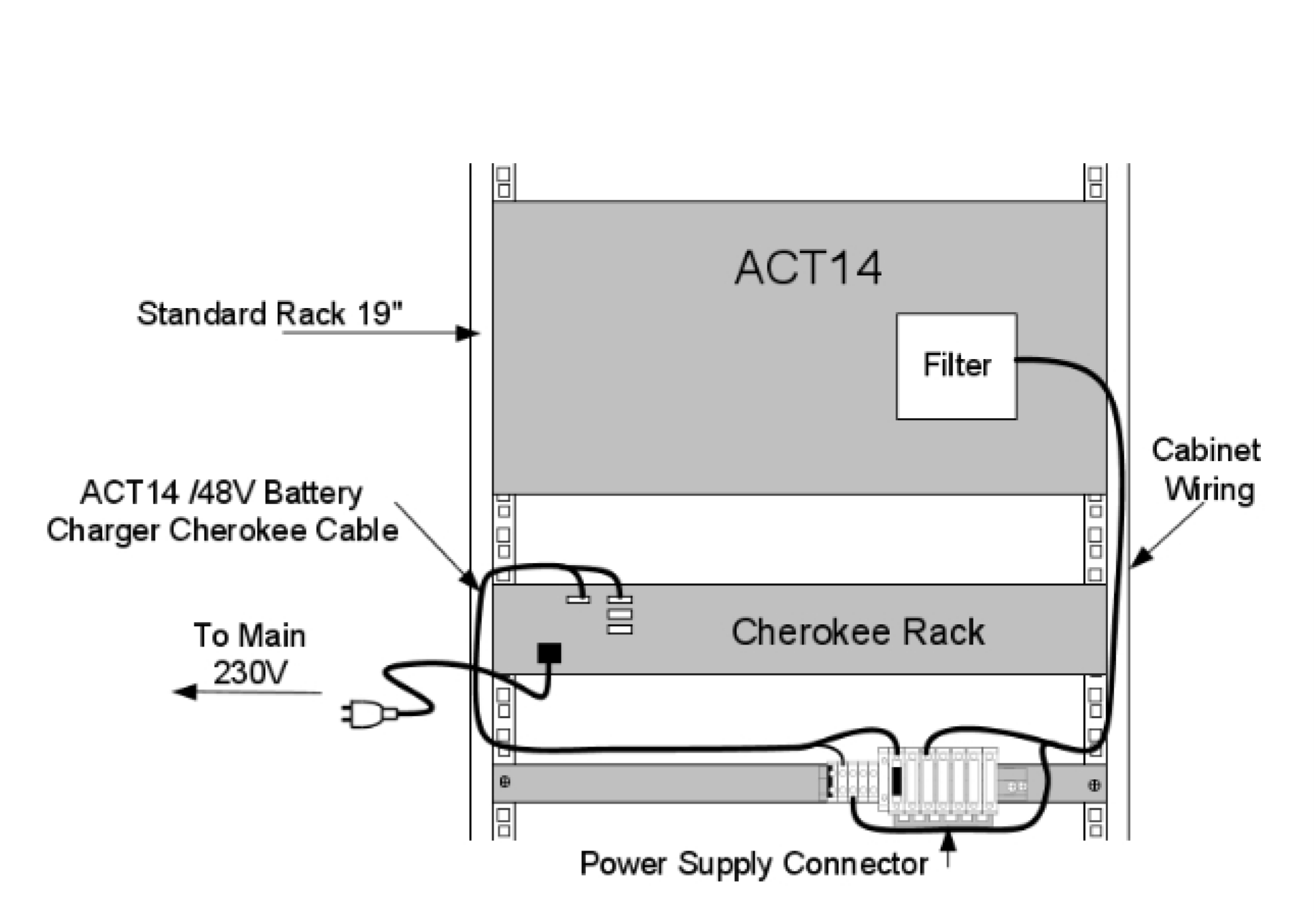
The Cherokee PE6500/50, with backup batteries powering the ACT shelf, has an autonomy of 20 minutes – 130 minutes
Board position
Any type of Alcatel-Lucent OmniPCX Enterprise Communication Server board can be inserted in any available slot. The main CPU and backup CPU (for redundancy configurations) have dedicated positions.
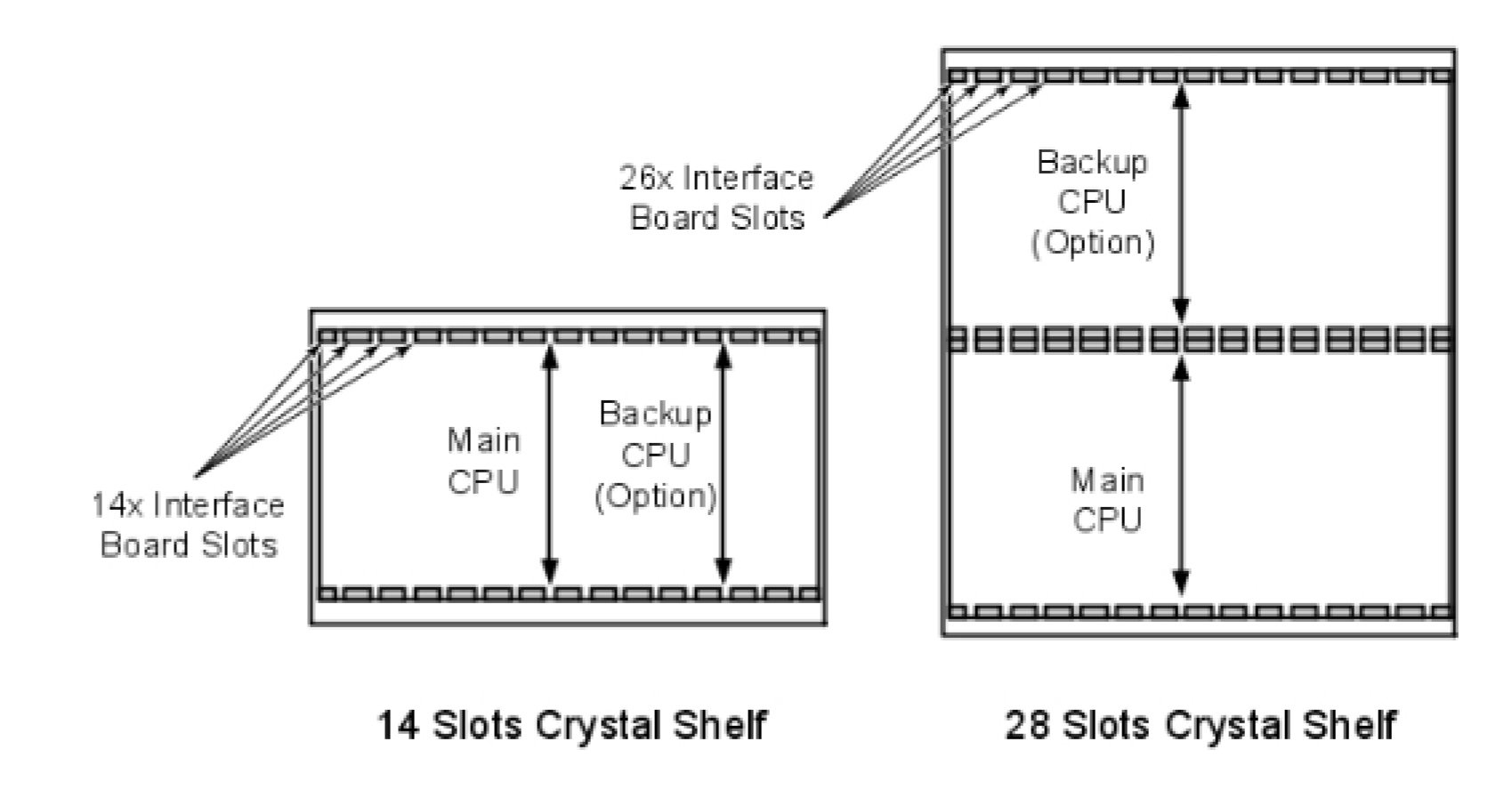 CPU7-2 board
CPU7-2 board
The CPU7-2 board processes system applications (telephone, telematics, messaging applications) and generates the clock signals and tones for the entire ACT. The CPU7-2 board uses a low power Celeron 650 MHz processor.
The CPU7-2 includes USB 1.1 interfaces. This interface can be used to replace a 3.5” floppy disk for database backup and restore.
This board comprises:
- One ATA interface to control an IDE Hard disk
- Four asynchronous V24 interfaces (two full and two reduced)
- One 10/100BT Ethernet Interface
- One Backbone embedded 10 Mbit/s Ethernet interface
- One input recorder interface to provide the “External music” function
- Real Time clock function
- Q23 detection
- DECT Timing Module (DTM) function
- A daughter board equipped with one SATA hard disk The CPU7-2 complies with RoHS requirements.
INT-IP3 board
The INT-IP3 (INTer connecting on IP network step 3) board allows:
- Main Crystal shelf/Peripheral Crystal shelf link over IP: in this case, INT-IP3 boards are used in pairs: one in coupler position in the main shelf (INT-IP3A) and the other in controller position in the peripheral shelf (INT-IP3B)
- INT-IP3B board duplication
- Access to IP phones
- Access to multimedia PCs
- Voice over IP logical links and trunk groups
- DECT synchronization
- Binary authentication
- Main IP Characteristics of the INT-IP3 board include:
- 10/100/1000BT connection, Half/Full duplex with auto-negotiation and configuration
- VoIP standards: H.323 voice compliance, RTP, RTCP
- Voice compression standards: G.711, G.723.1/A, G.729/AB: the compression function is performed by DSPs located on the INT-IP3 board and on the optional ARMADA daughterboards which provides additional DSPs.
- Encryption: Embedded voice (SRTP) and signaling encryption
- Framing: from 10 (available with G.711 and G.729) to 40 ms, according to configuration
- Echo canceller: maximum echo cancellation value is 128 ms – Quality of Service:
- TOS diffserv o 1p/Q tagging, VLAN
- IP addressing: static configuration only
- Modem/fax transparency
- Fax T.38
GPA2 Board
The GPA2 (General Purpose Auxiliary) board offers the following features:
- Voice (speech) processing:
- Multi-language Voice Guides (Multi Language Voice Prompt), that can be downloaded in a maximum of four languages and simultaneously played on 60 channels
- 4 x 6 Mb (4 x 12 min) static Voice Guides
- 5 Mb (15 min) dynamic Voice Guides o Music-on-hold
- Detection and generation of tones and DTMF:
- Generation of 32 tones o 23, Q.23x o DTO (CCD) o 2100Hz o R1/R2 o VAD
- Several simultaneous multi-party conferences
eZ32 board
The eZ32 board enables 32 analog terminals to be connected to a Crystal shelf.
DECT8 Board
The DECT8 board enables the connection of up to 8 DECT RBS base stations using HDB3 transmission at 1.152Mbps.
Summary
| Type of terminal | Crystal hardware boards | |
| Name | Modularity | |
| Digital (Alcatel-Lucent 9 series sets) | eUA32 | 32 |
| Analog | eZ32-ST | 32
32 20 + voice guide broadcast |
| S0 | BRA2 | 8 |
| DECT | DECT8
DECT8 Pack |
8 DECT RBS base stations
DECT8 + 30DECT users |
Network interface boards
NPRAE-2 board
The NPRAE-2 (New Primary Rate Access E2) board can be used to connect an Alcatel-Lucent OmniPCX Enterprise Communication Server to:
- Another Alcatel-Lucent OmniPCX Enterprise Communication Server in a private network (ABC-F, Q-SIG)
- A non Alcatel-Lucent PBX in a private DPNSS network (DPNSS is not available for the US) – A public ISDN or DASS2 network
NDDI2-2 board
The NDDI2-2 board (also called LS/GS) provides 8 accesses to most of the public analog networks. It also allows the PCX to be connected to a pager system according to the ESPA standard.
The NDDI2-2 board can connect up to eight 2-wire analog lines. Lines 1 to 4 are processed on the mother board and lines 5 to 8 are processed on the QATI daughterboard.
The optional daughterboards are:
- CLIPIA: this daughterboard allows the line impedance to be modified to identify the caller and to detect the metering pulses. Each daughter board is dedicated to 4 network lines, i.e. 2 daughterboards are necessary to handle 8 lines of the NDDI2-2 board.
- The Tax Metering: this daughter board is used to detect metering pulses. Two different boards are available, such as :
o 12/16 KHz metering o 50 KHz metering
Each daughter board is dedicated to 4 network lines, i.e. 2 daughter boards are necessary to handle 8 lines of the NDDI2-2 board. Only a single type of Tax metering board is allowed on a same NDDI2-2 board.

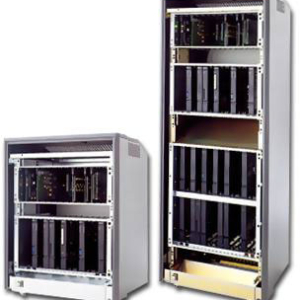
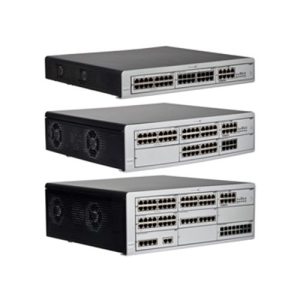
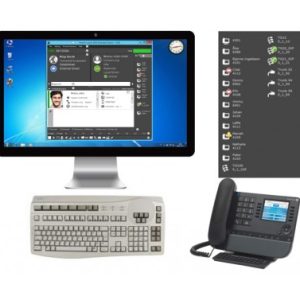

Reviews
There are no reviews yet.